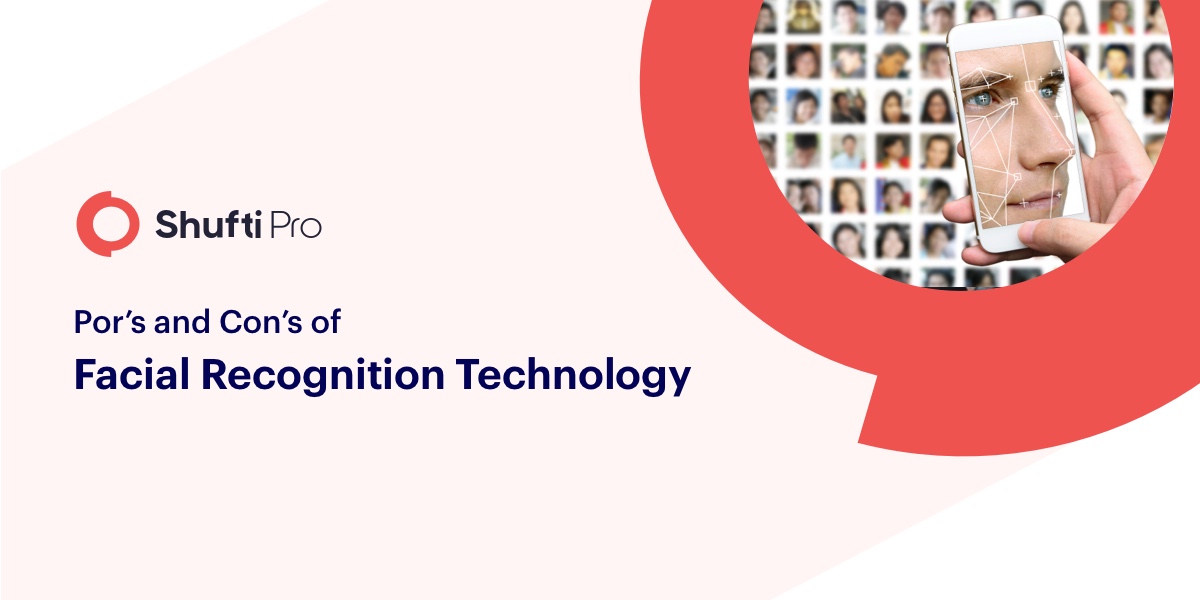Facial Recognition Technology – Behind The Curtains

Business competition has made security technology critical. There are many innovative security technologies, but facial recognition technology is perhaps most productive in this regard. It is a low budget technology that greatly improves security. It’s the fastest and most widely used biometric authentication system.
Facial Recognition Technology and How Does It Work?
Face verification has been widely used in many ways, whether to solve a crime or open doors. It has always been in fiction and Sci-Fi movies. It’s verily the fastest biometric technology with the purpose of identification of human faces.
The mathematical algorithms of biometric facial recognition follow several stages of image processing, which are:
- Capture: The first step is to collect a sample of physical or behavioral conditions during a given time period.
- Extraction: After this, all the gathered data should be extracted from samples to create templates based on them.
- Comparison: After the extraction, the collected data is compared with the existing templates.
- Matching: The last step of face detection technology is to make a decision based on whether the facial features of a new sample are matching with the one from a facial database or not. It usually takes just seconds.
Face Verification Technology- Good or Bad?
Technologies are not always accepted and welcomed so is the case of face recognition technology. The use of facial recognition technology has already triggered a heated debate on whether it’s necessary to combat crime or an unlawful breach of privacy. People on one side enjoy how it has eased their lives in many ways, on the other, they have concerns about their data being misused.
Pros of Face Verification
Integration Process is Easy
Most times, face recognition tools work flawlessly with the existing security software that companies have installed. And they’re also easy to program for interaction with a company’s computer system. Why is it great for business? Businesses won’t need to spend extra money and time on redeveloping their own software to make it suitable for Face Recognition Technology integration. Everything will be already adaptable.
High Accuracy
These days, the success level of face verification technology became higher than before. Thanks to the assistance of 3D facial recognition technologies the process of identification happens to be incredibly accurate and showing great results. It’s possible but difficult to fool it. Accuracy promises that there will not be any misunderstandings that come from bad face recognition software.
No Contact Required
Face recognition is now lodged over fingerprint scanning because it does not require any contact process. People don’t have to worry about the potential drawbacks related to fingerprint identification technology, such as dirty hands.
Robust and Fast
With the ever-increasing demand for speed and growing number of cyberattacks, having fast and accurate technology is key. Facial recognition technology provides quick and convenient verification. It is very difficult to fool face recognition technology, which prevents scams.
Full Automation
Manual recognition is done by security guards or the official representatives outside the company’s premises. Whereas the facial recognition tech automates the identification process and ensures it is errorless every time. You won’t even need an employee to monitor the cameras 24/7. Automation means convenience and reduces the expenses too.
Cons of Facial Recognition Technology
High Costs Required
It requires top-quality cameras and advanced software which obviously are expensive. However, there are predictions that technological advancements are likely to reduce the prices of facial recognition systems in the future.
Huge Data Storage
This technique requires video and high-quality images that take up a significant amount of storage. This leads organizations to use numerous computers to process everything and to do it quickly, which is not very convenient.
Changes in Appearance and Camera Angle
Any major changes in appearance, including weight changes or piercing, can throw off the technology. In these instances, a new picture is required because technology fails at this. A camera angle can also cause issues in identifying a face.
Facial Recognition Technology- Banned Due to Privacy Concerns
There have already been privacy concerns related to face verification technology. In recent news, according to new laws, the Victorian Government has banned schools from using facial recognition software in classrooms until or unless they have permission from parents, students and the Department of Education.
A German minister has Seek Facial Recognition for Airports and Railway Stations. The installment of such cameras and technology has received a lot of backlash from lawyers and groups that feel that it will compromise the privacy of individuals. However, the Interior Minister of Germany, Thomas de Maiziere, has strongly defended this innovation and stated that the security of public places can’t be compromised under any circumstances.
We Can’t Stop The Tide – But We Can Manage It
Face recognition software is becoming widely adopted in many sectors across the globe. Concerns related to privacy may slow down the adoption in a few areas but the tide has come in and is changing business practices across the world. But who is managing and regulating the software? The government will surely have a role but they need to be well aware of the best practices worldwide. Biometric Institute advice on best practices as well as privacy concerns.
This technology can reduce the costs of necessary compliance as well as free up our time as demonstrated by smart gates installed at airports.
As with all new technologies, face recognition raises legitimate concerns. Constructive policies and dialog are the preferred way forward to gain the maximum benefit for society at large, and to make sure they do the least harm.
People have concerns regarding commercial face recognition technology which is quite unreliable unless the person cooperates to give his photo by standing still and looking directly at the camera like SmartGate. This is quite different from non-cooperative recognition of persons without their knowledge using surveillance cameras on which people have concerns. That is why cooperative face recognition systems are well-accepted by the public at the borders, and privacy has been carefully considered in their design.










